 W
WThe Austrian–Hungarian War was a military conflict between the Kingdom of Hungary under Mathias Corvinus and the Habsburg Archduchy of Austria under Frederick V. The war lasted from 1477 to 1488 and resulted in significant gains for Matthias, which humiliated Frederick, but which were reversed upon Matthias' sudden death in 1490.
 W
WThe Austro-Turkish War (1663–1664) or fourth Austro-Turkish War was a short war between the Habsburg Monarchy and the Ottoman Empire. The Ottoman aim was to resume the advance in central Europe, conquer Vienna and subdue Austria. The Ottomans managed to capture key strongholds, however, the Habsburg army under Raimondo Montecuccoli succeeded in halting the Ottoman army in the Battle of Saint Gotthard.
 W
WThe Bocskai uprising, known in Hungary as Bocskai's War of Independence was a revolt which took place in Hungary, Transylvania and modern Slovakia during the Long Turkish War against Emperor Rudolf II. The rebel leader was Stephen Bocskai, a Protestant Hungarian nobleman. The Ottoman wars had burdened the Kingdom of Hungary for years, causing famine and disease, and the armies of the Christian states had been weakened by losses to Ottoman and Tatar forces.
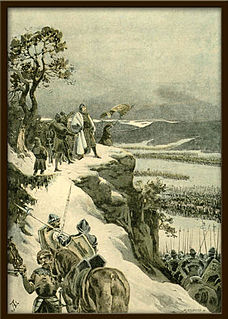 W
WThe Bohemian War (1468–1478) began when the Kingdom of Bohemia was invaded by the king of Hungary, Matthias Corvinus. Matthias invaded with the pretext of returning Bohemia to Catholicism; at the time, it was ruled by the Hussite king, George of Poděbrad. Matthias' invasion was largely successful, leading to his acquisition of the southern and eastern parts of the country. Its core lands however, centered on Prague, were never taken. Ultimately both Matthias and Poděbrad would proclaim themselves king, though neither ever acquired all the necessary subordinate titles. When Poděbrad died in 1471, his successor Vladislaus II continued the fight against Matthias. In 1478, the war ended following the treaties of Brno and the Olomouc. Upon Matthias' death in 1490, Vladislaus would succeed him as king of both Hungary and Bohemia.
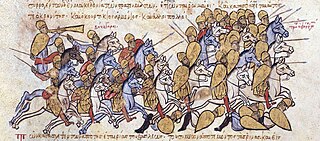 W
WThe Bulgarian–Hungarian wars were a series of conflicts that occurred during the 9th–14th centuries between the Bulgarian Empire and the Kingdom of Hungary. The nearly 500-year conflict encompassed the northern and western Balkans, or what is known today as north-western Serbia, Romania and northern Bulgaria.
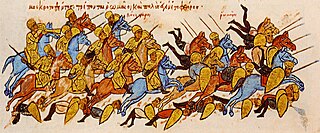 W
WThe Byzantine–Bulgarian war of 894–896 was fought between the Bulgarian Empire and the Byzantine Empire as a result of the decision of the Byzantine emperor Leo VI to move the Bulgarian market from Constantinople to Thessaloniki which would greatly increase the expenses of the Bulgarian merchants.
 W
WThe Crusade of Varna was an unsuccessful military campaign mounted by several European leaders to check the expansion of the Ottoman Empire into Central Europe, specifically the Balkans between 1443 and 1444. It was called by Pope Eugene IV on 1 January 1443 and led by King Władysław III of Poland, John Hunyadi, Voivode of Transylvania, and Duke Philip the Good of Burgundy.
 W
WThe first Mongol invasion of Hungary started in March 1241 and started to withdraw in late March 1242.
 W
WThe Gulf War was a war waged by coalition forces from 35 nations led by the United States against Iraq in response to Iraq's invasion and annexation of Kuwait arising from oil pricing and production disputes.
 W
WThe Hungarian invasions of Europe took place in the 9th and 10th centuries, the period of transition in the history of Europe in the Early Middle Ages, when the territory of the former Carolingian Empire was threatened by invasion from multiple hostile forces, the Magyars (Hungarians) from the east, the Viking expansion from the north and the Arabs from the south.
 W
WThe Hungarian Revolution of 1956, or the Hungarian Uprising, was a nationwide revolution against the Hungarian People's Republic and its Soviet-imposed policies, lasting from 23 October until 10 November 1956. Leaderless at the beginning, it was the first major threat to Soviet control since the Red Army drove Nazi Germany from its territory at the end of World War II in Europe.
 W
WThe Hungarian–Czechoslovak War, or Northern Campaign, was fought between the Hungarian Soviet Republic and the First Czechoslovak Republic from April to June 1919.
 W
WThe Hungarian–Romanian War was fought between Hungary and Romania from 13 November 1918 to 3 August 1919. The conflict had a complex background, with often contradictory motivations for the parties involved.
 W
WThe Mačva War of 1268 was a brief conflict in the Banate of Mačva, in the southern realm of the medieval Kingdom of Hungary. Stefan Uroš I brought an invasion force to Mačva, and did considerable damage to the city until Hungarian reinforcements under Béla IV from the north came to fight off the Serbs. This turned the tide of the conflict, and Stefan Uroš was captured by the Hungarians, and Hungary retained the city, albeit with heavy losses.
 W
WThe Mali War is an ongoing armed conflict that started in January 2012 between the northern and southern parts of Mali in Africa. On 16 January 2012, several insurgent groups began fighting a campaign against the Malian government for independence or greater autonomy for northern Mali, which they called Azawad. The National Movement for the Liberation of Azawad (MNLA), an organization fighting to make this area of Mali an independent homeland for the Tuareg people, had taken control of the region by April 2012.
 W
WThe Neapolitan campaigns of Louis the Great, also called the Neapolitan Adventure, was a war between the Kingdom of Hungary, led by Louis the Great, and the Kingdom of Naples. It was fought from 1347 until 1352.
 W
WThe Ottoman–Hungarian Wars were a series of battles between the Ottoman Empire and the medieval Kingdom of Hungary. Following the Byzantine Civil War, the Ottoman capture of Gallipoli, and the decisive Battle of Kosovo, the Ottoman Empire was poised to conquer the entirety of the Balkans and also sought and expressed desire to expand further north into Central Europe beginning with the Hungarian lands.
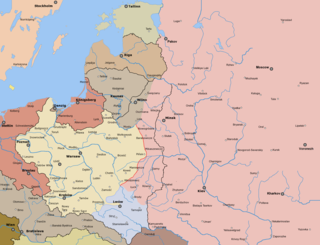 W
WThe Polish–Ukrainian War, from November 1918 to July 1919, was a conflict between the Second Polish Republic and Ukrainian forces. The conflict had its roots in ethnic, cultural and political differences between the Polish and Ukrainian populations living in the region both as successor states of the dissolved Russian and Austrian empires. The war started in Eastern Galicia after the dissolution of the Austro-Hungarian Empire and spilled over into Chełm Land and Volhynia (Wołyń) regions formerly belonging to the Russian Empire, which were both claimed by the Ukrainian State and the Ukrainian People's Republic. Poland re-occupied the disputed territory on 18 July 1919.
 W
WRákóczi's War of Independence (1703–11) was the first significant attempt to topple the rule of the Habsburgs over Hungary. The war was conducted by a group of noblemen, wealthy and high-ranking progressives and was led by Francis II Rákóczi and resigned soldiers and peasants fought alongside the noblemen. The insurrection was unsuccessful, ending with the Treaty of Szatmár; however, the Hungarian nobility managed to partially satisfy Hungarian interests.
 W
WThere was a period of revolutions and interventions in Hungary between 1918 and 1920. The First Hungarian Republic was founded by Mihály Károlyi during the Aster Revolution in 1918. In March 1919, the republic was overturned by another revolution, and the Hungarian Soviet Republic was created. The unresolved conflicts led to wars between Hungary and its neighbor states in 1919. The Hungarian Soviet Republic ceased to exist after the Romanian occupation. The Treaty of Trianon in Versailles chilled the conflicts and beneficiaries for this event were Romania, the newly formed states of Czechoslovakia, and the Kingdom of Serbs, Croats and Slovenes.
 W
WThe Second Mongol invasion of Hungary led by Nogai Khan and Tulabuga took place during the winter of 1285–1286.
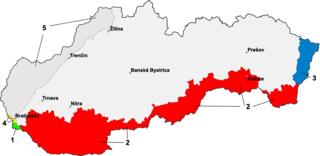 W
WThe Slovak–Hungarian War, or Little War, was a war fought from 23 March to 31 March 1939 between the First Slovak Republic and Hungary in eastern Slovakia.
 W
WAccording to the Treaty of Trianon, the city of Sopron in western Hungary and its surroundings were assigned to Austria. After an uprising in 1921 in this region, a referendum was held and 65.8% of the votes were in favor of belonging to Hungary. This referendum was accepted by the major powers and the transition of Sopron and its surrounding 8 villages from Austria to Hungary was the only serious territorial revision in the years following the Treaty of Trianon.
 W
WThe War in Afghanistan was a conflict that took place from 2001 to 2021 in the central Asian country of Afghanistan. It started with an invasion that led to the United States and its allies toppling the Taliban-ruled Islamic Emirate of Afghanistan in order to deny al-Qaeda a safe base of operations in the country. For most of the period the war was officially fought between allied U.S., NATO and Afghan Armed Forces, and opposing Taliban insurgents. The Taliban regained power and re-established the Emirate 19 years and 8 months later, thus winning the war. It was the longest war in United States history, surpassing the Vietnam War by roughly five months.
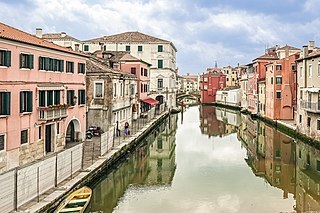 W
WThe War of Chioggia was a conflict between Genoa and Venice which lasted from 1378 to 1381, from which Venice emerged triumphant. It was a part of the Venetian-Genoese Wars. The war had mixed results. Venice and her allies won the war against their Italian rival states, however lost the war against King Louis the Great of Hungary, which resulted in the Hungarian conquest of Dalmatian cities.
 W
WWorld War II or the Second World War, often abbreviated as WWII or WW2, was a global war that lasted from 1939 to 1945. It involved the vast majority of the world's countries—including all of the great powers—forming two opposing military alliances: the Allies and the Axis powers. In a total war directly involving more than 100 million personnel from more than 30 countries, the major participants threw their entire economic, industrial, and scientific capabilities behind the war effort, blurring the distinction between civilian and military resources. Aircraft played a major role in the conflict, enabling the strategic bombing of population centres and the only two uses of nuclear weapons in war to this day. World War II was by far the deadliest conflict in human history, and resulted in 70 to 85 million fatalities, a majority being civilians. Tens of millions of people died due to genocides, starvation, massacres, and disease. In the wake of the Axis defeat, Germany and Japan were occupied, and war crimes tribunals were conducted against German and Japanese leaders.